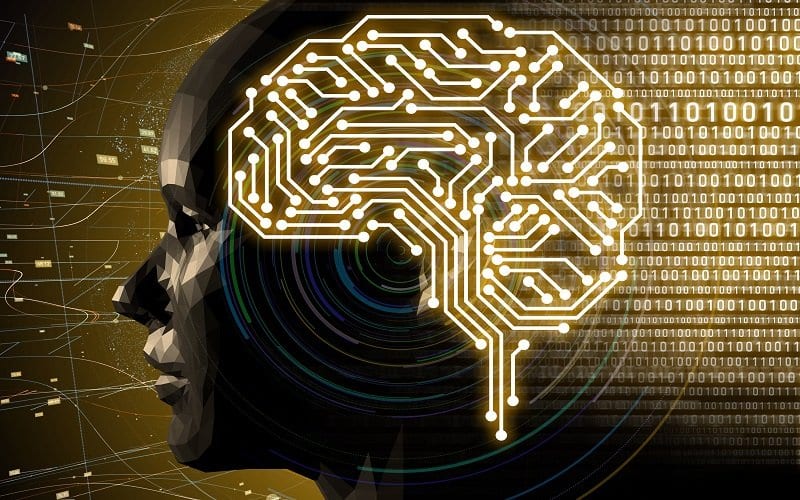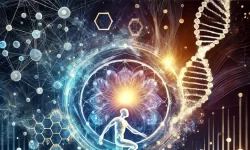In this era of the interconnected and interdependent digitalized global economy, the nature and definition of security are going through a fundamental transformation. The revolution in information technologies, processes, and connected computers is altering everything– from how we communicate to how we work, how we bank, how we shop and how we go to war. The emergence of this whole new world of cyberspace has and is been more or less like an alien territory today—where there are very few knowns– and mostly unknowns.
What needs to be seen is whether the connected computers can bring communication and collaboration or chaos and calamities!
While information technology on connected computers is fundamentally shaking the status quo and the power structure of NGIOA, it has also been instrumental in shaking the fundamentals of security and pointing out the inadequacy and ineffectiveness of its current form of definition, structure, nature, and response.
For much of human history, the concept and approach to security have largely revolved around the use of force and territorial integrity of geospace. As the definition and meaning of security are getting fundamentally challenged and changed in the world of cyberspace, the blurring territorial boundaries and integrity are also becoming hard to define and maintain in not only cyberspace but also geospace and space. The notion that traditional security is about violence towards respective nations in geospace—from within or across its geographical boundaries is now outdated and needs to be evaluated and updated for the digital global age.
Just like in any traditional geospace, in cyberspace and its ecosystem also, one is only as strong as the weakest link in the chain. It is time nations’ collectively incorporate a different, more accurate meaning of boundaries-if any, and of security—irrespective of in space, cyberspace, or geospace.
The challenges and complexities of evolving threats and security have crossed the barriers of space, ideology, and politics—demanding a constructive collaborative effort of all stakeholders. When the changing nature of threats is bringing new sets of challenges and complexities, collective NGIOA brainstorming is a necessity and not an option—to have an objective evaluation of what is a threat and how can it be secured!
While the debate on the structure and role of government, industries, organizations, academia will continue in the coming years, any attempt to redefine security needs to begin with identifying, understanding, incorporating, and broadening the definition and nature of security threats.
While information technology provides tools and technology to communicate information on connected computers, it also provides tools and technology to misuse information.
Connected computers and their ecosystem—that makes cyberspace, brings complex challenges and complexities. A cyber-security system –like any system is made of a collection of parts that have a complex level of inter-connectivity and inter-dependencies, designed to achieve the desired goal. In spite of this inter-connectivity and inter-dependencies of a collection of sub-parts of any and all systems, there is currently no culture of collective brainstorming, identifying, evaluating, or managing risks across nations—and cyber-security is no exception.
Irrespective of whether it is a geo-security system, space-security system, or cyber-security system, any and all systems need to be evaluated holistically and collectively—not merely a sum of its parts (because the whole is always more than the sum of its parts)—but as a complete functioning unit. When any complex system is made up of a collection of parts, not only the individual parts need to be evaluated, but the environment in which the parts operate, its internal and external processes—and its entire ecosystem also needs to be evaluated. The cyber-security system, like the human body, comprises different components that interact in complex ways—within and across cyberspace. Nations need to understand the cyber-security atmosphere, technology, processes, people, management, governance– its inter-connectedness and interdependencies—within and across cyberspace as one complete system. Understanding cyberspace completely will help nations improve their cyber-security risk understanding and capabilities.
At the moment, cyber threats and cyber-security are not clearly understood by any nation: its governments, industries, organizations, academia, and individuals.
In cyberspace, information is critical for not only survival but also sustainability—and hence becomes a critical necessity to protect it at all costs. When cyberspace is riddled with challenges and complexities, it is vital to have a cyber-security model and system that is dynamic, holistic, and collective– and that considers all variables and integration points of NGIOA.
As we see, cyber-security vulnerabilities do not arise only from only technology, but also from inadequacies in governance, processes, management, culture, inter-dependencies, and integration. When each nation: its government, industries, organizations, academia, and individuals are now vulnerable to cyber-attacks, it is important to understand that short-term fixes, that are preferred over identifying and fixing the root cause of the problems generally do not work. The approach to security is currently reactive—not only across governments, but most of the industries and organizations do not give importance to securing their information data and are reactive in their response, and do not invest proactively in cyber-security. This reactive response approach limits the entire nation’s ability to have proactive cybersecurity risk management capabilities.
As a result, cyber-security information—irrespective of individuals, industries, organizations, academia, or governments across nations is at risk.
The increasing level of cyber-security challenges from integration within, between, and across NGIOA forces a collective mindset and efforts for securing cyberspace. Unless security becomes a collective proactive initiative, there will be recurring incidents of cyber-attacks with varying levels of impact and intensity.
In order to be able to minimize and manage– any and all cyber-security risks, it is important to understand every possible building block of cyberspace: its framework, associated processes, technology, people, and ecosystem. When managing cybersecurity seems to be near impossible at the moment, it is important to acknowledge that there is a need for collective understanding and an integrated NGIOA-I cyber-security framework without which, any and all efforts will be meaningless.
Cyber-security requires an integrated approach with a common language. While appropriate hardware and software are a fundamental necessity, establishing an effective cyber-security framework, integrated NGIOA-I approach, structured processes are even more important.
What do we know about cyberspace? Who does it belong to? Who is accountable? Governments-Department of Defense? Homeland Security? Industries? Organizations? Academia?
While going digital is a global age necessity, the question is whether going digital is wise through open internet — especially when the nation’s digital infrastructure is put together in a haste in a silo—with no coordinated framework, standards, policies, and regulations. Unless there are significant advances in the nature of digital infrastructure, its processes, technology, tools, accountability, and oversight, it is not only the privacy of NGIOA-I that is @ risk—everything is at risk.
In an interconnected world, NGIOA-I needs to be responsible for securing cyberspace. Relying on the government alone to provide and enforce cyber-security is like asking a thief to break in with doors and windows wide open. Each one of us—each NGIOA-I has a responsibility towards securing cyberspace—just like each one of us has the responsibility towards securing our valuables, homes, and businesses!!
Cyberspace cannot be secured if nations and their governments work in a silo within and across its national boundaries. The need for integration and collaboration between NGIOA-I—within and across the nation’s geographical boundaries is a fundamental necessity for not only managing cyberspace but to manage any global threat! The time for NGIOA integration and collaboration is now!
About the Author
Jayshree Pandya (née Bhatt), Founder and CEO of Risk Group LLC, is a scientist, a visionary, an expert in disruptive technologies, and a globally recognized thought leader and influencer. She is actively engaged in driving global discussions on existing and emerging technologies, technology transformation, and national preparedness.
Her work focuses on the impact of existing and emerging technological innovations on nations, national preparedness, and the very survival, security, and sustainability of humanity. She believes that the reality of the imminent technological and economic singularity necessitates that Darwin’s evolution theory, a theory that has evolved from natural selection to the survival of the fittest to symbiosis to mutualism be translated and scaled from micro to macro level and understood and evaluated from the perspective of the transformative and evolutionary changes seen across nations (largely triggered due to technology transformation and re-defining and re-designing of systems at all levels). Her research in this context evaluates the evolution of intelligence in all forms, researches strategic security risks emerging from disruptive innovations, reviews the diminishing capacities of the risk management infrastructure, points out the changing role of decision-makers, defines dynamic decision-making approaches with machine intelligence, integrates all components of a nation: governments, industries, organizations and academia (NGIOA), and defines strategic security risks so that nations can improve the state of risk-resilience across cyberspace, geospace and space (CGS). As nations make a move from centralization towards decentralization, the re-defining and re-designing of systems at all levels evaluated in Dr. Pandya’s comprehensive research scholarship include artificial intelligence, machine learning, deep learning, internet of things, blockchain, cryptocurrency, quantum computing, virtual reality, synthetic biology, big data analytics, drones, nanosatellites, biotechnology, nanotechnology, gene editing, and much more. Her research is much needed for the survival and security of humanity today and in the coming tomorrow.
Jayshree’s doctorate work in the 1980s focused on hydrogen production by Halobacterium halobium, for which she received India’s National Young Scientist Award in Biochemistry. Her many publications on this work have been cited in several books, journals, and reports published by governments, including a report from the United States Department of Energy. Her work on anti-cancer drugs also received worldwide attention and, amongst other citations, has been referenced in a report published by the World Health Organization. In 1991, she was invited to come to the United States (under the Scientist Exchange Program) to continue research on hydrogen production and was awarded a post-doctoral fellowship at the Hawaii Natural Energy Institute. After that, she researched atherosclerosis at the University of Chicago Medical School. Next, she took a job at Aurotech, a biotech company based in Wisconsin. As in her Ph.D. research, she used microorganisms to develop natural processes and technologies, and some of the projects she worked on were quite promising. While her doctorate and post-doctorate studies gave her the first taste of the power of interdisciplinary research, it also introduced her to the repressive power of institutional silos and inefficiencies. As a result, her physical location wasn’t the only thing that shifted in the 1990s; her focus did as well. Since Microbiology trained her to see changes in tiny organisms coming from natural selection, she began to see similar forces at work in the evolution of individuals as well as entities across NGIOA and society in general. It’s all the same basic mechanism. Her career took another turn after she was asked to consider risk management as part of a strategic planning effort by one of her employers. She quickly realized that most risk management is all process, with no actual benefit. That was the beginning of Risk Group, the strategic security risk research organization she founded in 2002, from where she is passionately creating and managing cutting-edge security ventures that bring a futurist perspective to nations and all its components to improve innovation capacity and to define and design new ideas, innovations, products, and services for security and sustainability.
From the National Science Foundation to organizations from across nations, Jayshree is an invited speaker on emerging technologies, technology transformation, digital disruption, strategic security risks, industry risks, and country risks. She is the author of the book, The Global Age: NGIOA @ Risk and has also published many scientific and technical papers.
Jayshree advises decision-makers at all levels on existing and emerging technologies: emerging applications, impact, and solutions.
Contact Risk Group for further information





 Why Do We Need Risk Group?
Why Do We Need Risk Group?